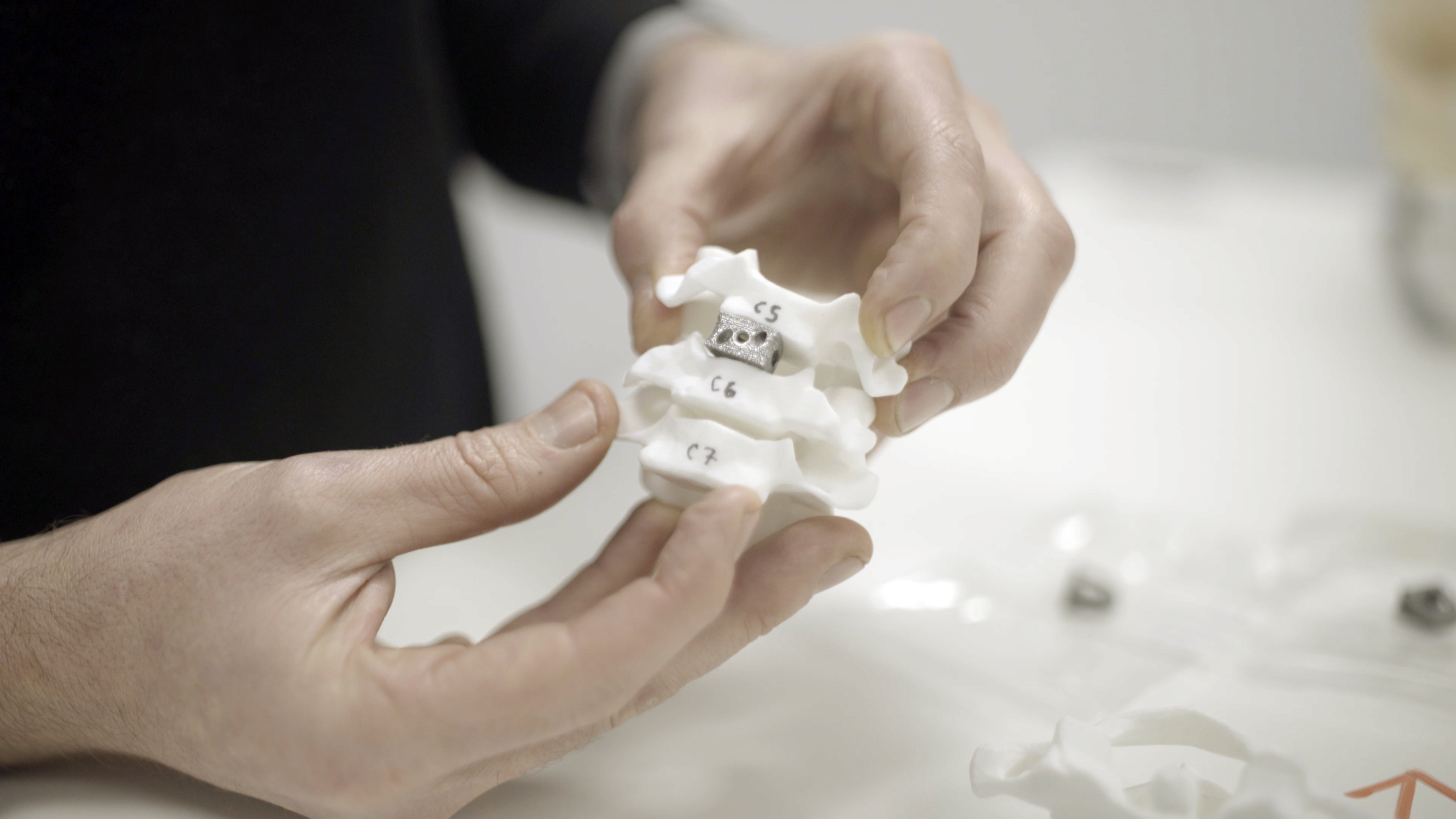British metal 3D printing specialist, Renishaw, has collaborated with nTopology, and research organization Irish Manufacturing Research (IMR) to streamline the 3D printing spinal implants. The metal implants made in the study mimic the structure of human bone and have lattice structures.
Ed Littlewood, Marketing Manager of Renishaw’s Medical and Dental Products Division, explained, “AM can be used to manufacture spinal implants with lattice structures, which cannot be achieved with conventional manufacturing techniques.”
“An implant with a lattice structure is lightweight, can be optimized to meet the required loading conditions and has a greater surface area, which can aid osseointegration. AM implants can be designed to mimic the mechanical properties of bone, resulting in better patient outcomes.”
Advanced manufacturing in Ireland
Based in Dublin, IMR is a not-for-profit independent research organization funded by Enterprise Ireland and IDA Ireland under the Technology Centres programs. The purpose of the research organization is to develop advanced manufacturing technologies in Ireland. Its research interests include Internet of Things, cybersecurity, manufacturing informatics, and additive manufacturing.
On the collaboration with Renishaw, Sean McConnell, Senior Research Engineer at IMR, said, “Two years ago, AM in IMR was non-existent,”
“Thanks to all the support we have received from Renishaw developing spinal implants as well as working on other projects, we have up-skilled our staff and are now well established in the AM space.
Generating lattice structures
The use of 3D printing technology in biomedical research is well documented. Renishaw itself has collaborated on various medical projects such as the maxillofacial surgery carried out at the University Hospital of Wales.
In the latest case study Renishaw, nTopology and IMR partnered to streamline the process of 3D printing spinal implants.
Manufacturing on Demand
nTopology’s Application Engineering Manager, Matt Rohr, said, “Traditional CAD tools weren’t built to design complex lattice structures; the job would be difficult or even impossible.”
“nTopology’s software was designed to complement existing workflows and make the job easier. We cut the design time of complex structures from days to minutes, which was a crucial component in helping this project run on schedule.”

3D printed spinal implants
For the project, the manufacturing of cervical spinal implants with lattice structures was planned.
IMR created the initial designs of the implant in the CAD software, nTop Platform. These designs were then passed onto nTopology and Renishaw for optimization. Finally, the implants were manufactured in titanium material (Ti 6Al-4V ELI) on a Renishaw RenAM 500M 3D printer.
McConnell said, “Renishaw worked tirelessly with us on improving the AM process for producing the spinal implants.”
“Together, we designed a set of experiments that yield the most appropriate parameter settings for the product. As a result, we reduced the amount of post processing required on key features of the implants by a factor of ten.”
Following this, the spinal implants were tested against FDA regulations. McConnell continued “To demonstrate proof of concept, we built witness coupons on the RenAM 500M build plate and performed destructive testing of the coupons,” […] “We did this to ascertain the chemical, metallurgical, and mechanical properties of the implants.”
* This article is reprinted from 3D Printing Industry. If you are involved in infringement, please contact us to delete it.
Author: Umair Iftikhar

Leave A Comment